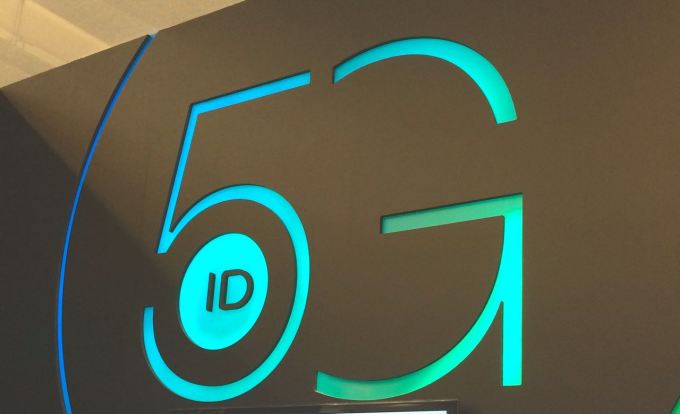We may be on the cusp of a new, simpler world.
From the current era of “peak complexity”, this new era will produce a step-change in society. It builds a platform for growth while empowering the developing world to leapfrog the competition.
At Huawei’s Mobile Broadband event last month, I saw what a 5G future looks like — ultra-fast, always on connectivity, making life more simple. A world based on data and collaboration, with automated intelligence and sensor-equipped surroundings, becomes a canvas to create businesses, to educate, and to make life more efficient.
The evolution of technology is often based on assumed, rather than real, criteria.
We often focus on the technology itself, rather than the behaviors and businesses it makes possible and the expectations it changes. Far too often, we are pushed into a solution before a new way of thinking or technology produces the true paradigm leap. It’s why vinyl, cassettes, CDs, and MP3s seemed appropriate at the time, before the real “game-changer” of music: subscription-based streaming.
The internet seemed more than adequate in the days of dial-up. We were amazed at what was possible, rather than what wasn’t. We didn’t pine for images or videos to load instantly because the expectation didn’t exist. Broadband internet changed that; we didn’t go online, we were online.
The next shift is about to happen, and it’s 5G.

3G meant we could access everything, everywhere and quickly. Selfies, life broadcasting, and microblogging were all made possible from rapid and constant data transfer. It is hard to see how, in 2005, we went to sleep without knowing what someone we didn’t really like across the world was having for lunch. It was this environment of data transfer, most notably from GPS-enabled phones, that made businesses such as Uber, WhatsApp, Instagram and Seamless possible.
4G changed the atomic unit of the web to video. It delivered Snapchat Stories, Periscope, and Facebook Live. The power of creating the moving image was in everyone’s hands.
Crowdfunding and free-to-publish video platforms gave everyone the potential of a global reach. With this comes 360-degree video and basic virtual reality, giving us the inroads to content that feels tactile and immersive.
The deeper effect of 4G is that it has killed patience and the feeling of being out-of-touch. Dating became the act of a nonchalant swipe with Tinder; booking a hotel became drawing the outline of a bed on HotelTonight; buying clothing or accessing your bank account was done with a press of the thumb. 4G has given us seamless, immediate, and frictionless transactions. They are delivered through interfaces and interactions which feel personal and rich.
However, humanity hasn’t advanced at the same speed as bandwidth. Soon, we’ll expect 4K content on our phones, and the ability to “swipe” it to large TV screens. What becomes of the set-top box, the TV channel, or the DVR in this environment?
Similarly, expansive data processing systems mean that the Internet becomes the backbone for daily life. Intimate and rich personal data combined with AI means that it becomes predictive: a web of apps accessed via IM, Google Now, Siri or Alexa, predicting our needs and informing our wants. It is a vast, ambient, assistive layer, rather than a place to “surf”, as we once called it.

To accommodate this, handset manufacturers should open their platforms and data in order to allow services and partnerships to be built on top. Our phones have become more important than we ever imagined, but they will soon become even more central to our lives. From wallets to security passes to visas and passports, our phones will become the digital center to our lives: much like home servers promised to be in the 2000’s.
Every business needs to think about this. M-commerce won’t be an isolated use case, but the primary way in which we consume. It will require a shift in thinking. We have to reboot our understanding of how media relates to people’s lives. The screens around us can become platforms for creating meaning. With 5G, technologies now on the horizon such as the conencted car and true virtual worlds will become commonplace to everyone.
We need to consider how to harness the amazing opportunities created by the plethora of new channels that are coming our way. Until now, we have defined media channels around a particular device. However, this starts to make less sense in a world where everything is digitally-connected and where everything is stored in the cloud. It also means that brands will become, and should become, transformational to our lives.
For each consumer, a brand carries a constellation of different meanings. Brands need to dig deep into the aspirations and attitudes of consumers in order to identify the meanings that resonate with them the most. The connections based on these insights drive greater involvement, trust, and desire, and will help to cement the relationship with the consumer.
In the run-up to 5G, finding ways to connect with consumers through their devices — and how they interact with them — will be the principal aim of brands, entrepreneurs, and innovators. What 5G connectivity and IOT really do is to create a platform for services, partnerships, and businesses to be built upon.
This journey will take us from our world where mobile is everything to one where forging meaningful connections through a an interconnected web of new platforms will bewhat matters.
